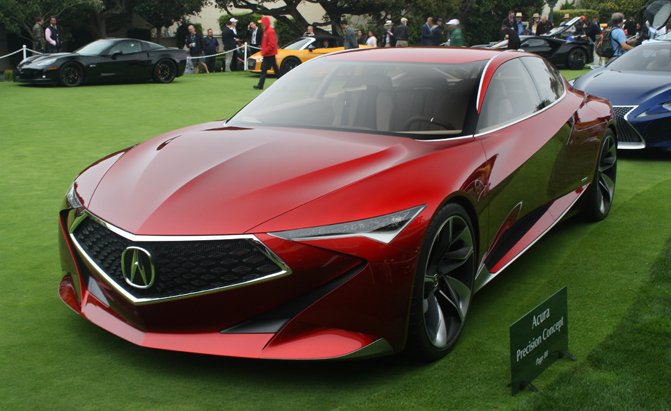New details have been revealed on the technology used in the 2016 Acura NSX.
The Japanese brand is touting the car’s lightweight multi-material body and spaceframe as revolutionary and Acura claims that the car is “by far the most rigid in its competitive set.” The space frame is made primarily from aluminum and ultra-high-strength steel which is anchored by a carbon fiber floor.
To achieve the car’s high rigidity, Acura is using the world’s first application of ablation casting, which blends traditional casting methods with a rapid cooling technique that results in flexibility with the design and rigidity of the casting but also the ductility and energy absorption characteristics of extruded material.
SEE ALSO: 2016 Acura NSX to Offer Customization Program
A new three-dimensionally formed ultra-high-strength steel A-pillar is also being used to keep outward visibility good while staying strong to meet modern crash regulations.
At the heart of the car is a 3.5-liter twin-turbo V6 mated to a nine-speed dual-clutch transmission and an electric motor that applies its torque straight to the crankshaft and on to the rear wheels. The engine uses both port and direct injection, while the 75-degree V-angle design and dry sump design enhance engine rigidity and allow the engine to be fitted as low to the ground as possible to keep the center of gravity low.
The powertrain setup sends it juice on to Acura’s super handling all-wheel drive system, which has Acura’s latest torque vectoring technology. The brand says the system has been upgraded with new logic and new hardware, allowing it to immediately respond to driver inputs and apply a precise amount of torque at each wheel. The strength of the electric motors in the NSX allow the super handling all-wheel drive setup to be running even at low vehicle and engine speeds.
Finally, Acura used computational fluid dynamics to work out the aerodynamics.The NSX employs active aerodynamics to achieve “top-class” air flow. Six vortices flow at the back of the car, helping to create downforce across the rear deck lid. From the below the car, a critical vortex flows through the rear diffuser to further stick the NSX to the ground.
Cooling is handled by 10 air-cooled heat exchangers which cool the internal bits while three radiators take care of cooling the engine. The transmission has two heat exchangers to cool it, while twin intercoolers keep the intake incoming air cold.



Leave a Reply